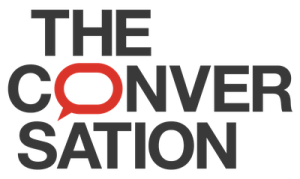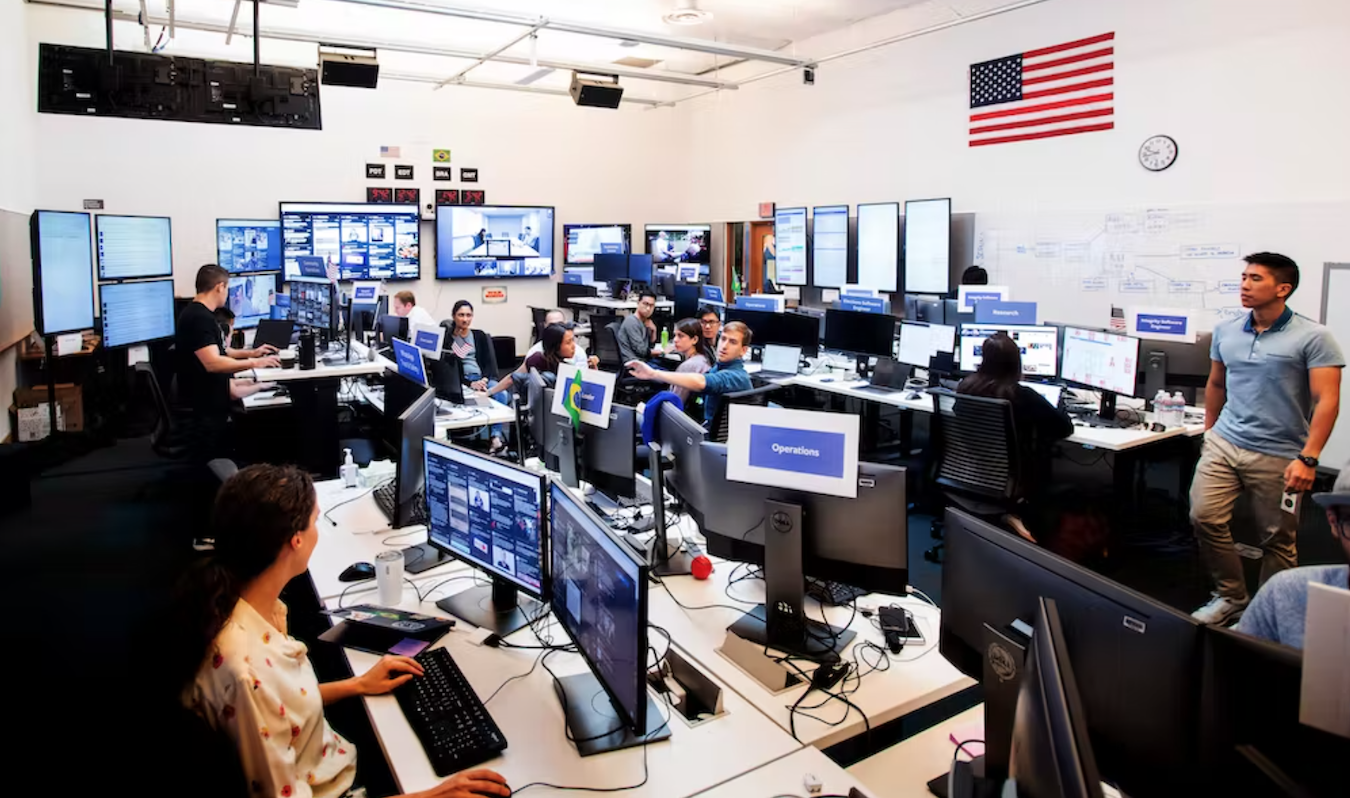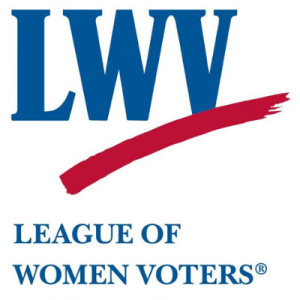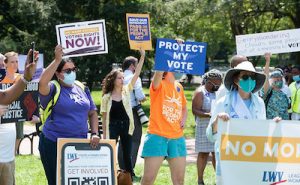
This article was first published in The Conversation, an independent news organization that publishes “informative articles written by academic experts for the general public.”
The 2016 U.S. election was a wake-up call about the dangers of political misinformation on social media. With two more election cycles rife with misinformation under their belts, social media companies have experience identifying and countering misinformation. However, the nature of the threat misinformation poses to society continues to shift in form and targets. The Big Lie about the 2020 presidential election has become a major theme, and immigrant communities are increasingly in the crosshairs of disinformation campaigns — deliberate efforts to spread misinformation.
Social media companies have announced plans to deal with misinformation in the 2022 midterm elections, but the companies vary in their approaches and effectiveness. We asked experts on social media to grade how ready Facebook, TikTok, Twitter, and YouTube are to handle the task.
The experts are Dam Hee Kim, Assistant Professor of Communication, University of Arizona; Anjana Susarla, Professor of Information Systems, Michigan State University; and Scott Shackelford, Professor of Business Law and Ethics, Indiana University.
2022 is looking like 2020
by Dam Hee Kim, Assistant Professor of Communication, University of Arizona
Social media are important sources of news for most Americans in 2022, but they also could be a fertile ground for spreading misinformation. Major social media platforms announced plans for dealing with misinformation in the 2022 U.S. midterm elections, but experts noted that they are not very different from their 2020 plans.
One important consideration: Users are not constrained to using just one platform. One company’s intervention may backfire and promote cross-platform diffusion of misinformation. Major social media platforms may need to coordinate efforts to combat misinformation.
Facebook/Meta: C
Facebook was largely blamed for its failure to combat misinformation during the 2016 presidential election campaign. Although engagement — likes, shares, and comments — with misinformation on Facebook peaked with 160 million per month during the 2016 presidential election, the level in July 2018, 60 million per month, was still at high levels.
More recent evidence shows that Facebook’s approach still needs work when it comes to managing accounts that spread misinformation, flagging misinformation posts, and reducing the reach of those accounts and posts. In April 2020, fact-checkers notified Facebook about 59 accounts that spread misinformation about COVID-19. As of November 2021, 31 of them were still active. Also, Chinese state-run Facebook accounts have been spreading misinformation about the war in Ukraine in English to their hundreds of millions of followers.
Twitter: B
While Twitter has generally not been treated as the biggest culprit of misinformation since 2016, it is unclear if its misinformation measures are sufficient. In fact, shares of misinformation on Twitter increased from about 3 million per month during the 2016 presidential election to about 5 million per month in July 2018.
This pattern seems to have continued as over 300,000 Tweets — excluding retweets — included links that were flagged as false after fact checks between April 2019 and February 2021. Fewer than 3% of these tweets were presented with warning labels or pop-up boxes. Among tweets that shared the same link to misinformation, only a minority displayed these warnings, suggesting that the process of putting warnings on misinformation is not automatic, uniform, or efficient. Twitter did announce that it redesigned labels to hinder further interactions and facilitate clicks for additional information.
TikTok: D
As the fastest-growing social media platform, TikTok has two notable characteristics: Its predominantly young adult user base regularly consumes news on the platform, and its short videos often come with attention-grabbing images and sounds. While these videos are more difficult to review than text-based content, they are more likely to be recalled, evoke emotion, and persuade people.
TikTok’s approach to misinformation needs major improvements. A search for prominent news topics in September 2022 turned up user-generated videos, 20% of which included misinformation, and videos containing misinformation were often in the first five results. When neutral phrases were used as search terms, for example “2022 elections,” TikTok’s search bar suggested more phrases that were charged, for example “January 6 FBI.” Also, TikTok presents reliable sources alongside accounts that spread misinformation.
YouTube: B-
Between April 2019 and February 2021, a fact-checking organization flagged 170 YouTube videos as false. Just over half of them were presented with “learn more” information panels, though without being flagged as false. YouTube seems to have added information panels mostly by automatically detecting certain keywords involving controversial topics like COVID-19, not necessarily after checking the content of the video for misinformation.
YouTube could recommend more content by reliable sources to mitigate the challenge of reviewing all uploaded videos for misinformation. One experiment collected the list of recommended videos after a user with an empty viewing history watched one video that was marked as false after fact checks. Of the recommended videos, 18.4% were misleading or hyperpartisan and three of the top 10 recommended channels had a mixed or low factual reporting score from Media Bias/Fact Check.

Facebook set up this ‘war room’ for the 2018 midterm elections to try to combat misinformation from foreign sources. Photo by Noah Berger/AFP via Getty Images
The Big Lie
by Anjana Susarla, Professor of Information Systems, Michigan State University
A major concern for misinformation researchers as the 2022 midterms approach is the prevalence of false narratives about the 2020 election. A team of misinformation experts at the Technology and Social Change project studied a group of online influencers across platforms who amassed large followings from the “Big Lie,” the false claim that there was widespread election fraud in the 2020 election. The Washington Post published an analysis on September 20, 2022, that found that most of the 77 accounts the newspaper identified as the biggest spreaders of disinformation about the 2020 election were still active on all four social media platforms.
Overall, I believe that none of the platforms have addressed these issues very effectively.
Facebook/Meta: B-
Meta, Facebook’s parent company, exempts politicians from fact-checking rules. They also do not ban political ads, unlike Twitter or TikTok. Meta has not released any policies publicly about how its rules specifically protect against misinformation, which has left observers questioning its readiness to deal with disinformation during the midterms.
Of particular concern are politicians benefiting from microtargeting — targeting narrow demographics — through election misinformation, such as a congressional candidate who ran an ad campaign on Facebook alleging a cover-up of “ballot harvesting” during the 2020 election. Election disinformation targeted at minority communities, especially Hispanic and Latino communities, on messaging apps such as WhatsApp is another major enforcement challenge for Meta when the company’s content moderation resources are primarily allocated to English-language media.
Twitter: B
Twitter does not allow political advertising and has made the most effort at reducing election-related misinformation. Twitter has highlighted its use of “prebunking,” the process of educating people about disinformation tactics, as an effective way of reducing the spread of misinformation.
However, Twitter has also been inconsistent in enforcing its policies. For example, Arizona gubernatorial candidate Kari Lake asked her followers on Twitter if they would be willing to monitor the polls for cases of voter fraud, which led civil rights advocates to warn of potential intimidation at polling stations.
TikTok: D
TikTok does not allow political advertising, which makes microtargeting from election-related misinformation less of a problem on this platform. Many researchers have highlighted TikTok’s lack of transparency, unlike platforms such as Twitter and Facebook that have been more amenable to efforts from researchers, including sharing data. TikTok’s stated content moderation approach has been that “questionable content” will not be amplified through recommendations.
However, video and audio content may be harder to moderate than textual content. The danger on platforms such as TikTok is that once a misleading video is taken down by the platform, a manipulated and republished version could easily circulate on the platform. Facebook, for example, employs AI-assisted methods to detect what it calls “near-duplications of known misinformation at scale.” TikTok has not released details of how it will address near-duplications of election-related misinformation.
Internationally, TikTok has faced immense criticism for its inability to tamp down election-related misinformation. TikTok accounts impersonated prominent political figures during Germany’s last national election.
YouTube: B-
YouTube’s policy is to remove “violative” narratives and terminate channels that receive three strikes in a 90-day period. While this may be effective in controlling some types of misinformation, YouTube has been vulnerable to fairly insidious election-related content, including disinformation about ballot trafficking. A disinformation movie titled “2000 mules” is still circulating on the platform.
Observers have faulted YouTube for not doing enough internationally to address election-related misinformation. In Brazil, for example, sharing YouTube videos on the messaging app Telegram has become a popular way to spread misinformation related to elections. This suggests that YouTube may be vulnerable to organized election-related disinformation in the U.S. as well.
Journalist and author Max Fisher discusses the nature of misinformation on social media and how it affects U.S. politics.
A range of readiness
by Scott Shackelford, Professor of Business Law and Ethics, Indiana University
Many of the threats to American democracy have stemmed from internal divisions fed by inequality, injustice, and racism. These fissures have been, from time to time, purposefully widened and deepened by foreign nations wishing to distract and destabilize the U.S. government. The advent of cyberspace has put the disinformation process into overdrive, both speeding the viral spread of stories across national boundaries and platforms and causing a proliferation in the types of traditional and social media willing to run with fake stories. Some social media networks have proved more able than others at meeting the moment.
Facebook/Meta: C
Despite moves to limit the spread of Chinese propaganda on Facebook, there seems to be a bipartisan consensus that Facebook has not learned its lessons from the 2016 election cycle. Indeed, it still allows political ads, including one from Republican congressional candidate Joe Kent claiming “rampant voter fraud” in the 2020 elections.
Though it has taken some steps toward transparency, as seen in its Ad Library, it has a long way to go to win back consumer confidence and uphold its social responsibility.
Twitter: B*
Twitter came out before other leading social media firms in banning political ads on its platform, though it has faced criticism for inconsistent enforcement. The Indiana University Observatory on Social Media, for example, has a tool called Hoaxy that enables real-time searches for a wide array of disinformation.
The * for this grade lies in the concern for Twitter’s future efforts to fight disinformation given its potential acquisition by Elon Musk, who has been vocal about his desire to permit uninhibited speech.
TikTok: F
The fact that TikTok does not allow political advertising on the surface bodes well for its ability to root out disinformation, but it has been apparent that its ability to do so in practice is very limited. AI-enabled deep fakes in particular are a growing problem on TikTok, something that the other social media networks have been able to monitor to greater effect.
Its efforts at setting up an election center, banning deep fakes, and flagging disinformation are welcome but are reactive and coming too late, with voting already underway in some states.
YouTube: C+
Google has announced new steps to crack down on misinformation across its platforms, including YouTube, such as by highlighting local and regional journalism, but as we’re seeing in the “Stop the Steal” narrative from the Brazilian election, so far misinformation continues to flow freely.
This article is republished from The Conversation under a Creative Commons license. Read the original article.

Civic Engagement
This article is part of Limestone Post’s series on civic engagement. Part of that series is a partnership with the League of Women Voters Bloomington–Monroe County, whose members wrote several articles.
This series also supports Limestone Post’s focus on solutions journalism: rigorous, evidence-based reporting that looks at efforts to solve problems. Solutions journalism does not just report on problems; rather, it focuses on how people are responding to problems. And it ensures readers have access to the information and tools needed to build an equitable and sustainable community.
Here are more stories in our series on civic engagement:
 Supreme Court Could Do Even More Damage
Supreme Court Could Do Even More Damage
by Julia Vaughn
The U.S. Supreme Court will hear a case that could upend how elections are conducted, writes Julia Vaughn, executive director of Common Cause Indiana. The court’s decision could make it easier “to gerrymander, suppress the vote, and challenge election results.” First published by Indiana Capital Chronicle, this article is part of Limestone Post’s coverage for Democracy Day. Click here to read more.
 Indiana Legislature Violates Principle of ‘Free and Equal’ Elections
Indiana Legislature Violates Principle of ‘Free and Equal’ Elections
by Jim Allison
Retired IU Professor Emeritus Jim Allison shows how the Indiana legislature, by means of partisan gerrymandering, has violated the democratic principle of one person, one vote. Proportional representation, he says, would help to give Hoosiers “free and fair” elections, as required by the state constitution. This article is part of Limestone Post’s coverage for Democracy Day, a nationwide collaborative. Click here to read more.
 Sheila Kennedy: Civic Literacy Is ‘Critical’ to a Functioning Democracy
Sheila Kennedy: Civic Literacy Is ‘Critical’ to a Functioning Democracy
by Sheila Suess Kennedy
Sheila Suess Kennedy, Emerita Professor of Law and Public Policy, says that when people don’t understand the most basic premises of our legal system, our public discourse is impoverished and ultimately unproductive. “Unfortunately,” she writes, “that civic knowledge is in very short supply.” Click here to read the article.
 Voting Guide by League of Women Voters of Bloomington-Monroe County
Voting Guide by League of Women Voters of Bloomington-Monroe County
by Debora Shaw
The League of Women Voters of Bloomington-Monroe County has created this quick-reference guide on voter registration, voting by mail, and various voting requirements. This is the first in a series of articles on civic engagement produced by LWV for Limestone Post. Click here to read the guide.
 How Redistricting Congressional Districts Can Undermine Majority Rule
How Redistricting Congressional Districts Can Undermine Majority Rule
by Marjorie Hershey
“In a democracy, voters choose their political leaders. In a democracy that permits gerrymandering, elected leaders choose their voters.” Marjorie Hershey, Professor Emeritus of Political Science at Indiana University, wrote this in an article for “The Conversation,” an independent news organization. She has updated the article for Limestone Post. Click here to read her article on redistricting.




